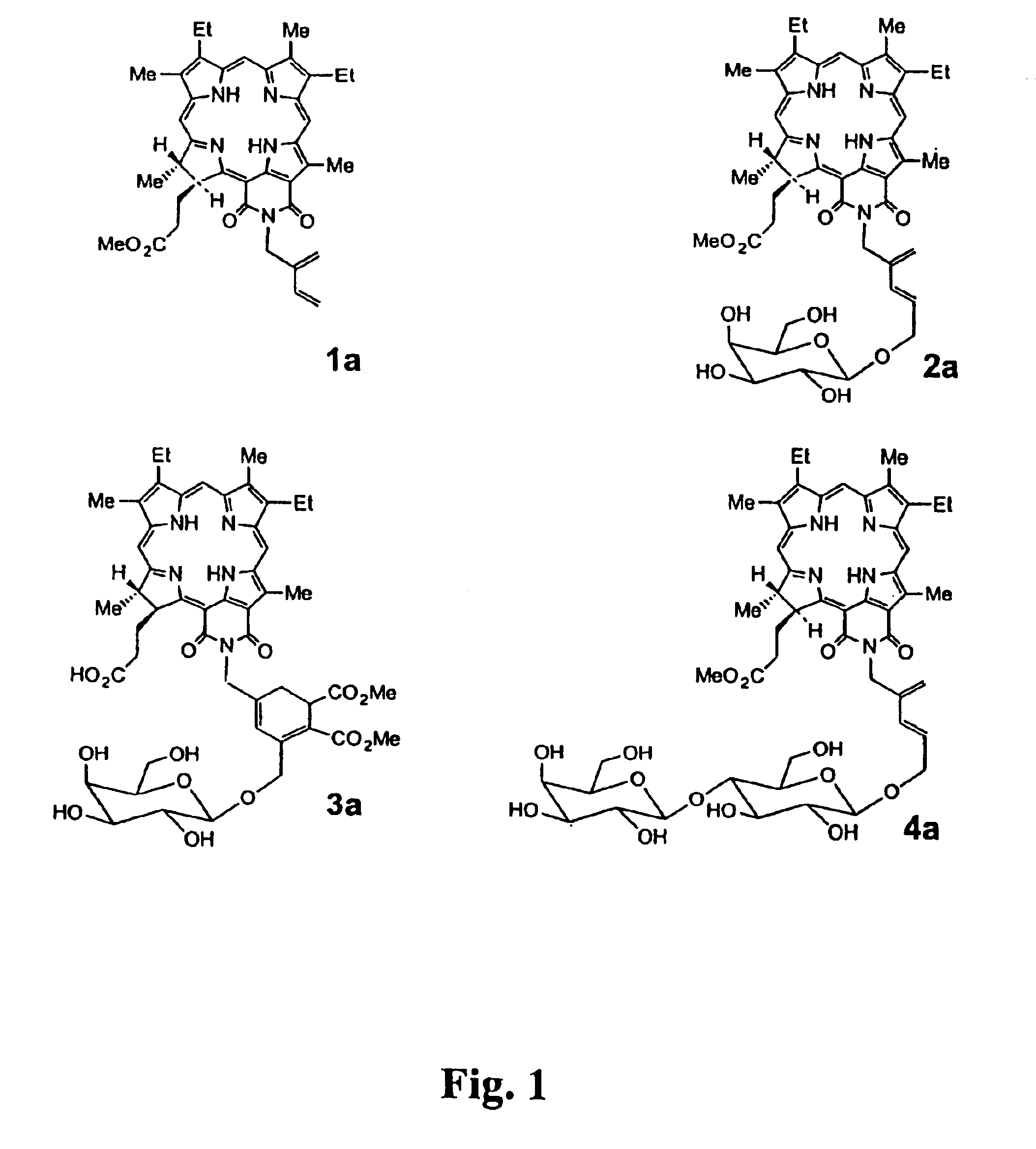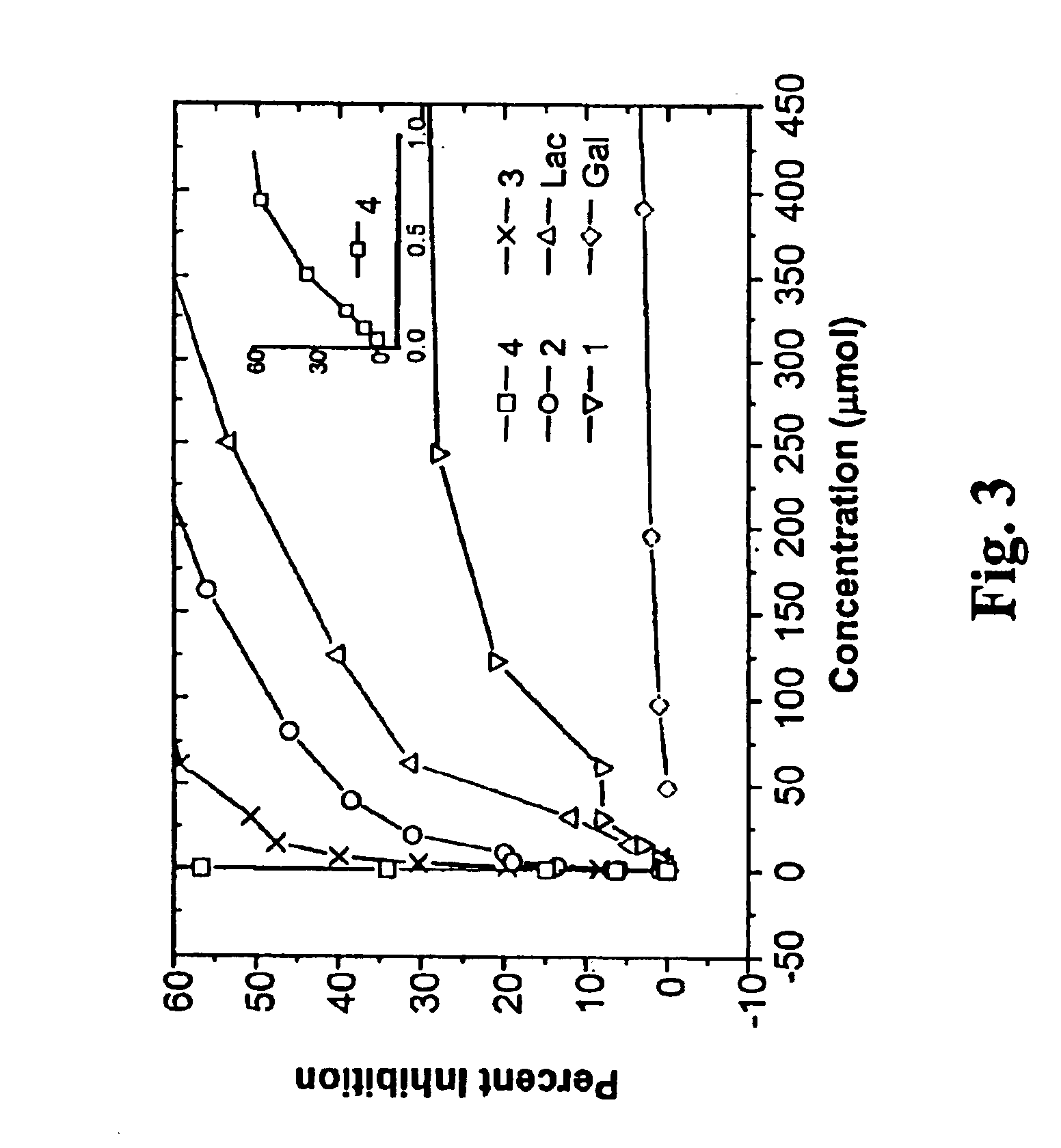Galectin recognized photosensitizers for photodynamic therapy
a photodynamic therapy and photosensitizer technology, applied in the direction of drug compositions, ultrasonic/sonic/infrasonic diagnostics, diagnostic recording/measure, etc., can solve the problems of not much success in improving the selectivity and specificity of the photosensitizer, strategies that rarely work well, and no rationally designed pdt agent based on this concept has been reported
- Summary
- Abstract
- Description
- Claims
- Application Information
AI Technical Summary
Problems solved by technology
Method used
Image
Examples
Embodiment Construction
The structures of compounds 2a, 3a and 4a of FIG. 1 are built from the crystal structure of benzimidazo(2,1-n)purpurin-18 131-imino-132-imide methyl ester (Kozyrev. A. N., Suresh, V., Das, S., Senge, M. O., Shibata, M., Dougherty T. J., Pandey, R. K., Syntheses and Spectroscopic Studies of Novel Chlorins with Fused Quinoxaline or Benzimadazole Ring Systems and the Related Dimers with Extended Conjugation, Tetrahedron, 56, 3353-3364, 2000). Appropriate modifications were performed with the SYBYL modeling program version 6.6 (Tripos Inc., St. Louis, Mo.) using standard geometry and the SYBYL fragment library. The extended conformation was assumed for the linker region. The geometry of each compound was fully optimized with a semi-empirical molecular orbital method, AM1, with the SPARTAN (Wavefunction Inc, Irvine, Calif.) program.
The binding specificity of the chlorin-carbohydrate conjugates for Gal moiety is due to the ability of these compounds to bind to the cellular target, and was...
PUM
| Property | Measurement | Unit |
|---|---|---|
| wave length | aaaaa | aaaaa |
| covalent bond | aaaaa | aaaaa |
| concentration | aaaaa | aaaaa |
Abstract
Description
Claims
Application Information
 Login to View More
Login to View More - R&D
- Intellectual Property
- Life Sciences
- Materials
- Tech Scout
- Unparalleled Data Quality
- Higher Quality Content
- 60% Fewer Hallucinations
Browse by: Latest US Patents, China's latest patents, Technical Efficacy Thesaurus, Application Domain, Technology Topic, Popular Technical Reports.
© 2025 PatSnap. All rights reserved.Legal|Privacy policy|Modern Slavery Act Transparency Statement|Sitemap|About US| Contact US: help@patsnap.com



